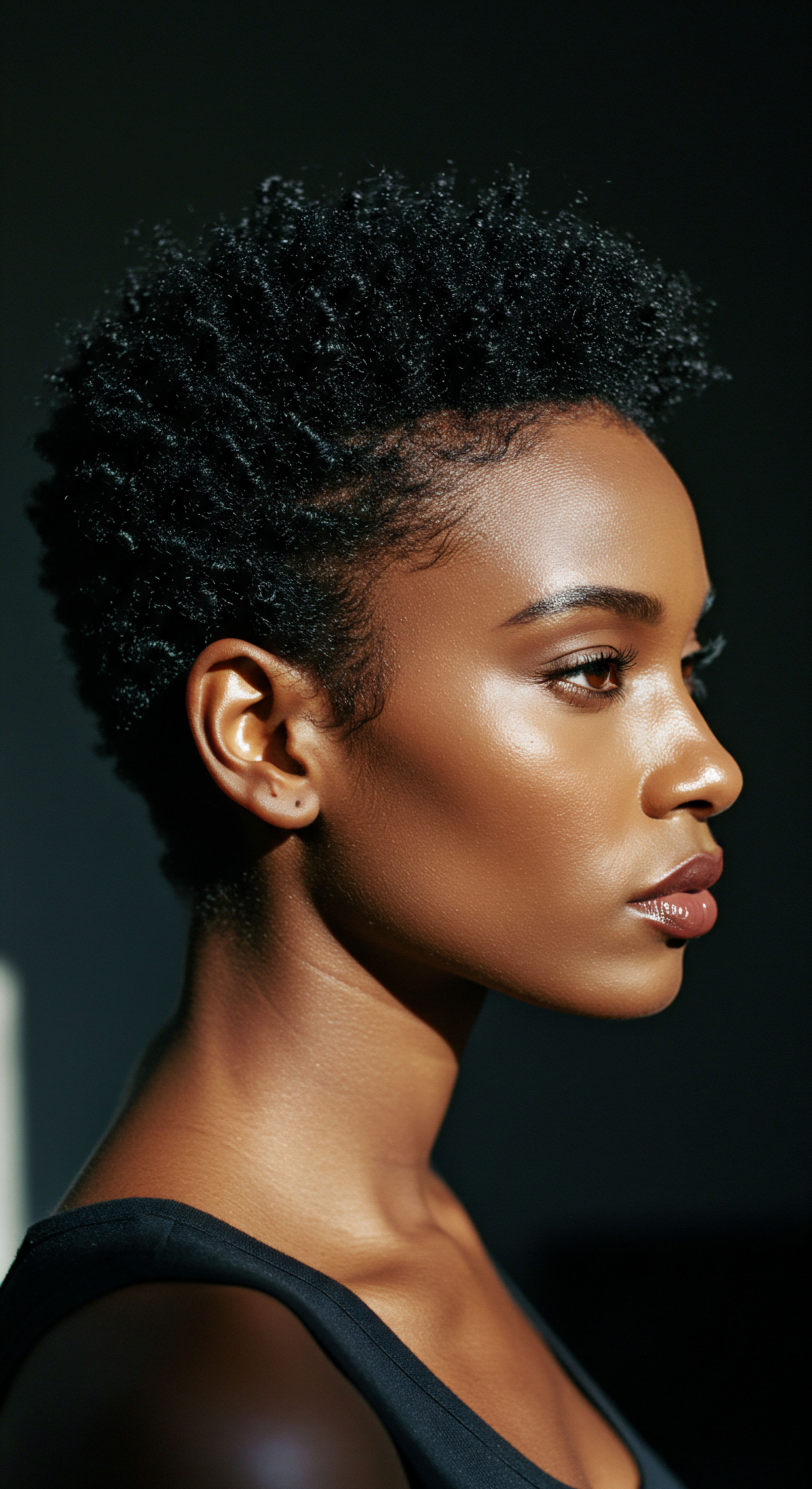
Roots
The whisper of water, the gentle caress of oil, the quiet strength of earth-derived elements—these are the timeless companions in the enduring quest for hair’s moisture balance. Long before the advent of laboratory-synthesized compounds, human societies, guided by generations of observation and ingenuity, discovered the profound wisdom held within their natural surroundings. This wisdom, passed down through the hands of mothers and elders, formed the bedrock of hair care, deeply connected to the rhythms of life and the inherent properties of diverse hair textures. Understanding how traditional practices approached hydration requires a return to these foundational principles, examining the very structure of hair and the natural agents chosen to sustain its vitality.

The Hair’s Intimate Architecture
At its core, hair, particularly textured hair, possesses a distinct architecture that influences its interaction with moisture. The cuticle, the outermost protective layer, consists of overlapping scales. In tightly coiled or curly hair, these scales tend to be more raised or less uniformly aligned compared to straight hair. This structural characteristic, while lending to its unique visual appeal, also creates pathways for moisture to escape more readily and makes the hair shaft more susceptible to external influences.
The cortex, the robust inner layer, holds the majority of the hair’s mass and contains the keratin proteins that give hair its strength and elasticity. Maintaining the integrity of both these layers is central to moisture retention.
Traditional hair care practices often mirrored an intuitive understanding of hair’s intricate structure, aiming to seal its delicate outer layers and replenish its inner core.
Sebum, the scalp’s natural oil, also plays a crucial role. For straight hair, sebum travels easily down the shaft, providing a natural coating. However, the spiraled form of textured hair can impede this flow, leaving the lengths and ends more prone to dryness. This inherent tendency toward dryness in afro-textured hair, for instance, means it demands a more deliberate and consistent approach to hydration than other hair types.
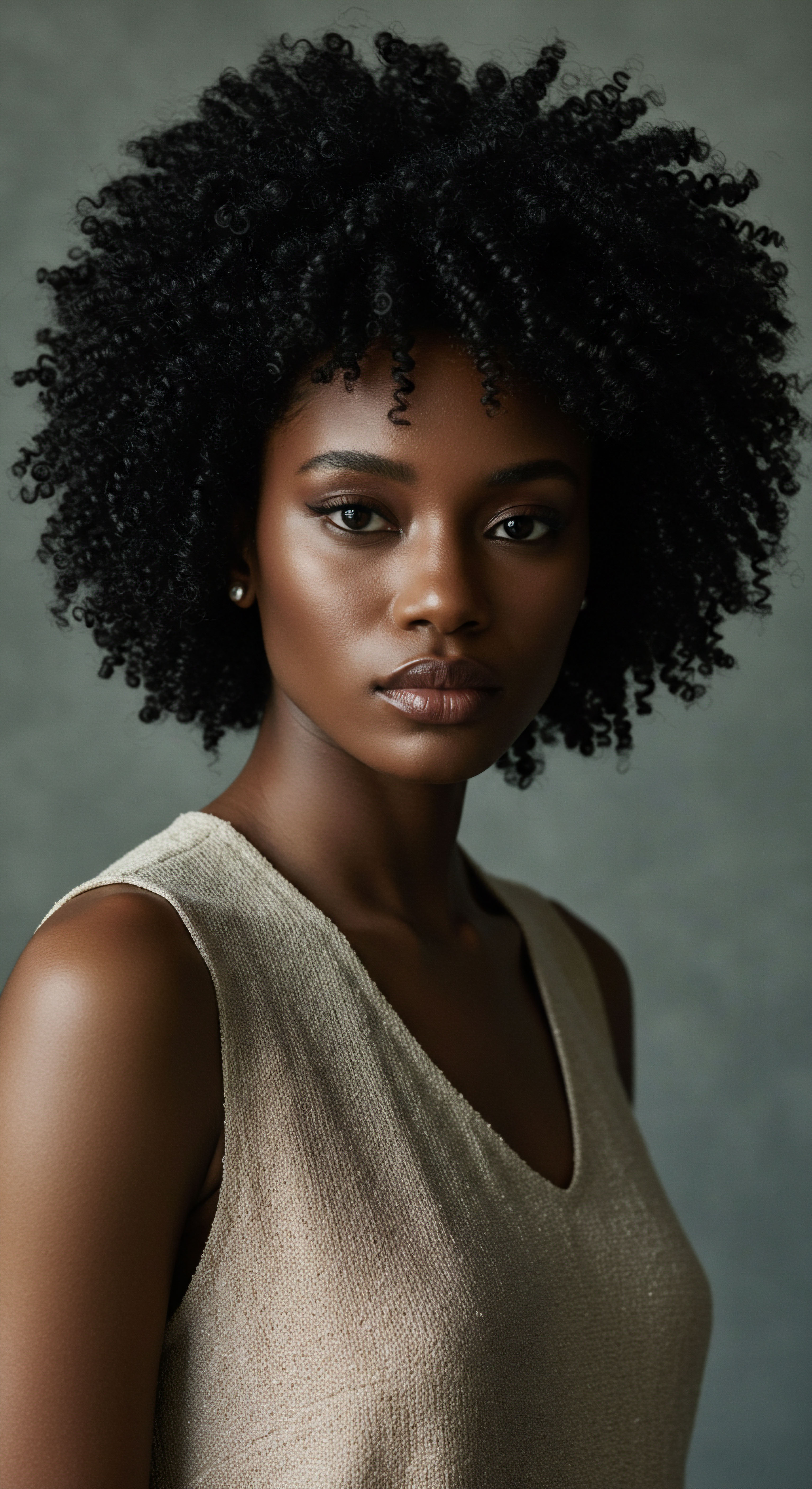
Nature’s Hydrators and Sealants
Traditional hair care systems, whether from African, Asian, or indigenous cultures, recognized these fundamental needs. They turned to the plant kingdom, identifying botanicals rich in humectants, emollients, and occlusives—substances that attract water, soften the hair, and seal moisture within.
- Humectants ❉ Substances that draw moisture from the air or from within the hair itself. Examples include plant mucilages and certain polysaccharides.
- Emollients ❉ Agents that soften and smooth the hair, often by filling in gaps in the cuticle. Many plant oils and butters serve this purpose.
- Occlusives ❉ Materials that form a protective barrier on the hair surface, preventing water loss. Waxes and heavier oils commonly provide this function.
The selection of ingredients was never arbitrary; it was a testament to generations of empirical knowledge. From the mucilaginous extracts of plants like okra, known for their hydrating properties, to the conditioning capabilities of saponin-rich botanicals, each element served a specific function in maintaining hair’s delicate moisture equilibrium.
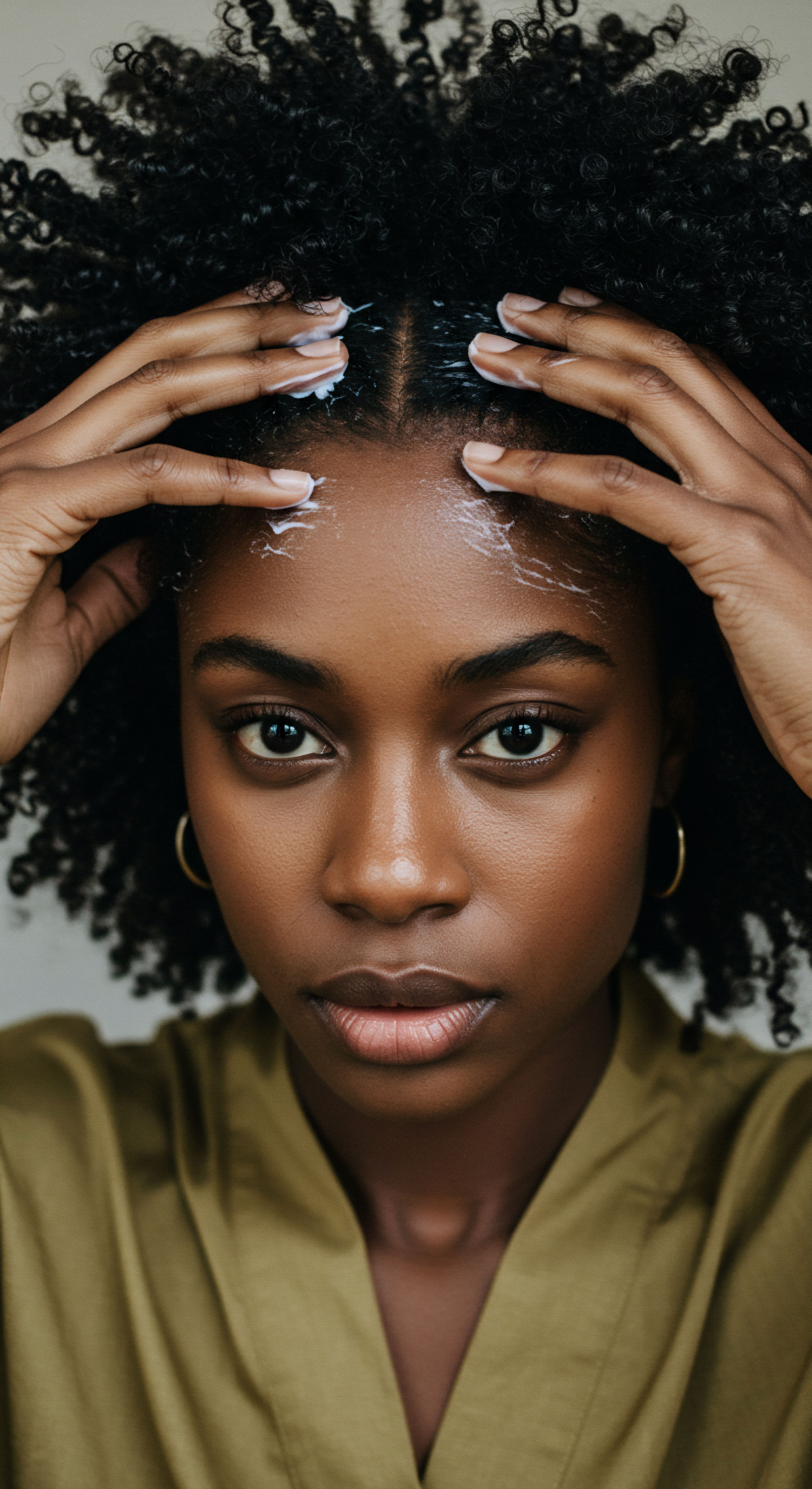
Ritual
The passage from foundational understanding to daily application marks the heart of traditional hair care. These practices were seldom isolated acts; they were woven into a rhythmic cadence, often communal, always intentional. This section moves from the ‘why’ of hair structure to the ‘how’ of its care, exploring the practical techniques and natural preparations that historically sustained moisture balance, allowing hair to thrive amidst varied climates and daily life. The wisdom held within these rituals speaks to a profound connection with the earth and a patient approach to beauty.
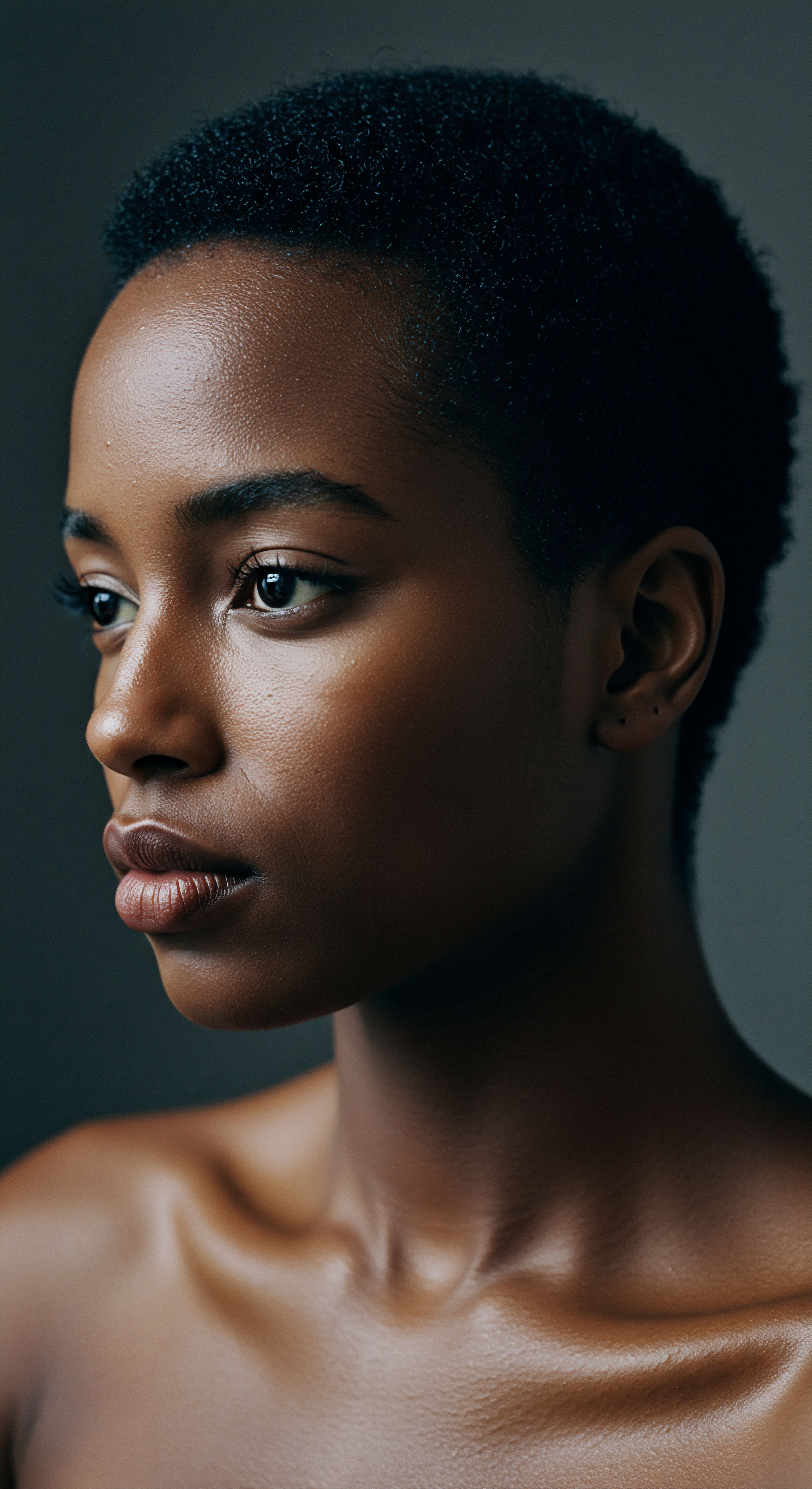
Cleansing with Gentle Purpose
Unlike modern cleansing agents that can strip hair of its natural oils, many traditional cleansers were designed to purify without depleting. The aim was not to create a squeaky-clean sensation, but to remove impurities while preserving the hair’s innate hydration.

How Did Traditional Cleansers Avoid Moisture Depletion?
Consider the widespread use of saponin-rich plants. These natural compounds, found in botanicals like soap nuts (Sapindus mukorossi) and shikakai (Acacia concinna), create a mild lather that cleanses by reducing water’s surface tension, allowing dirt and excess oil to be rinsed away. Critically, these plant-derived surfactants possess complex sugar structures that can bind water, offering a degree of moisturization even during the cleansing process.
This contrasts sharply with many contemporary synthetic detergents, which, while effective at cleansing, often leave the hair feeling parched. In India, for example, boiling soapnut with Indian gooseberries and shikakai yielded a strained water used for hair washing, a practice that eventually contributed to the very word “shampoo.”
Beyond saponins, certain clays, such as bentonite or kaolin, were traditionally employed for their absorbent qualities. These natural minerals draw out impurities and excess oils from the scalp and hair without disrupting the hair’s natural moisture balance. Their use represents a deep understanding of purifying the scalp environment while supporting hydration.

The Art of Layered Hydration
Following cleansing, traditional practices often involved a careful layering of hydrating and sealing agents. This approach mimicked the scalp’s natural lipid barrier, providing both replenishment and protection.

What Role Did Oils and Butters Play in Moisture Retention?
The application of oils and butters stands as a cornerstone of traditional moisture care. These natural lipids, extracted from seeds, nuts, and fruits, serve as emollients and occlusives. Oils like coconut oil, olive oil, and shea butter were, and remain, popular for their ability to coat the hair shaft, reducing moisture loss and imparting softness. The practice of “hot oil treatments,” where warmed oils are applied to the hair, is a historical method to infuse deep moisture and improve hair strength, often followed by covering the hair to aid penetration.
Moreover, some traditional practices involved fermented ingredients. Fermentation, a process driven by microorganisms, can break down compounds into smaller, more bioavailable molecules, enhancing their ability to penetrate the hair and scalp. Fermented rice water, for instance, used for centuries in Asian cultures, contains amino acids, vitamins, and minerals that can strengthen the hair shaft and improve its ability to hold water. This sophisticated understanding of ingredient modification through natural processes highlights the ingenuity present in ancient care regimens.
The thoughtful sequence of traditional hair rituals, from gentle cleansing to layered conditioning, reveals an enduring wisdom in maintaining hair’s natural hydration.
The wisdom of Ayurveda, for instance, places great emphasis on hair oiling, seeing it as a means to nourish, strengthen, and soothe the scalp. These practices often involved massaging herbal oils into the scalp to improve circulation and reduce dryness, directly contributing to the hair’s overall moisture content.
| Ingredient Type Saponin-Rich Plants |
| Traditional Source Examples Soap nuts, Shikakai, Soapwort |
| Primary Moisture Function Gentle cleansing, mild conditioning, water binding |
| Ingredient Type Mucilaginous Plants |
| Traditional Source Examples Okra, Flaxseed, Aloe Vera |
| Primary Moisture Function Hydration, film-forming, soothing |
| Ingredient Type Natural Clays |
| Traditional Source Examples Bentonite, Kaolin, Fuller's Earth |
| Primary Moisture Function Purifying scalp, oil absorption without stripping |
| Ingredient Type Plant Oils and Butters |
| Traditional Source Examples Coconut oil, Shea butter, Olive oil |
| Primary Moisture Function Emollience, sealing, cuticle smoothing |
| Ingredient Type Fermented Liquids |
| Traditional Source Examples Fermented rice water, Fermented tea |
| Primary Moisture Function Enhanced nutrient delivery, strengthening, hydration |
| Ingredient Type These natural elements were carefully chosen for their unique contributions to hair health. |
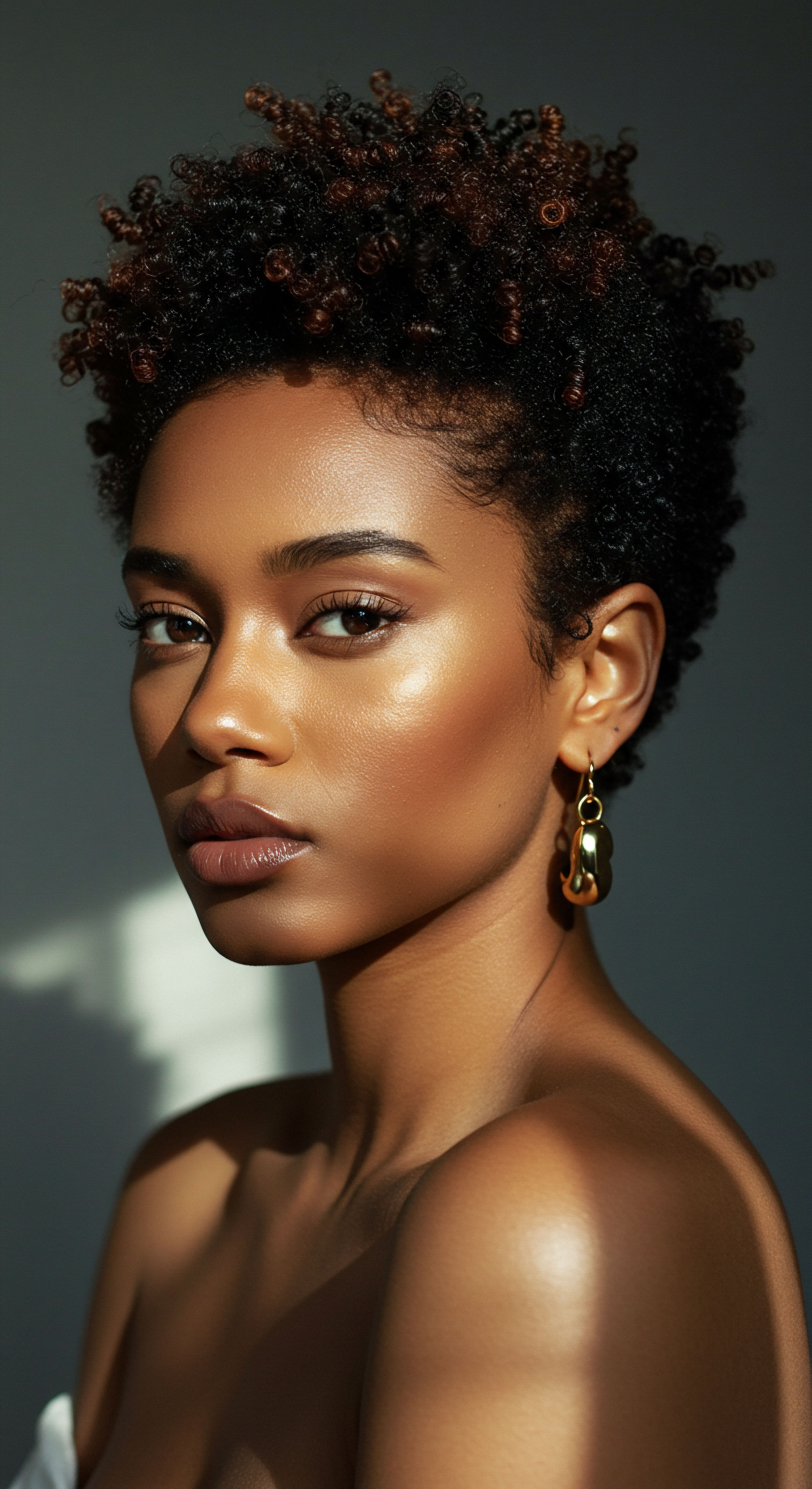
Relay
To consider traditional hair care practices as mere anecdotal remedies would be to overlook a profound body of applied science, often honed through centuries of collective experience and cultural transmission. The methods of old, far from being simplistic, often reveal an intricate understanding of hair biology and environmental adaptation. This exploration delves into the deeper scientific and cultural dimensions of how these enduring practices addressed moisture balance, drawing upon contemporary research to illuminate the quiet sophistication of ancestral knowledge.
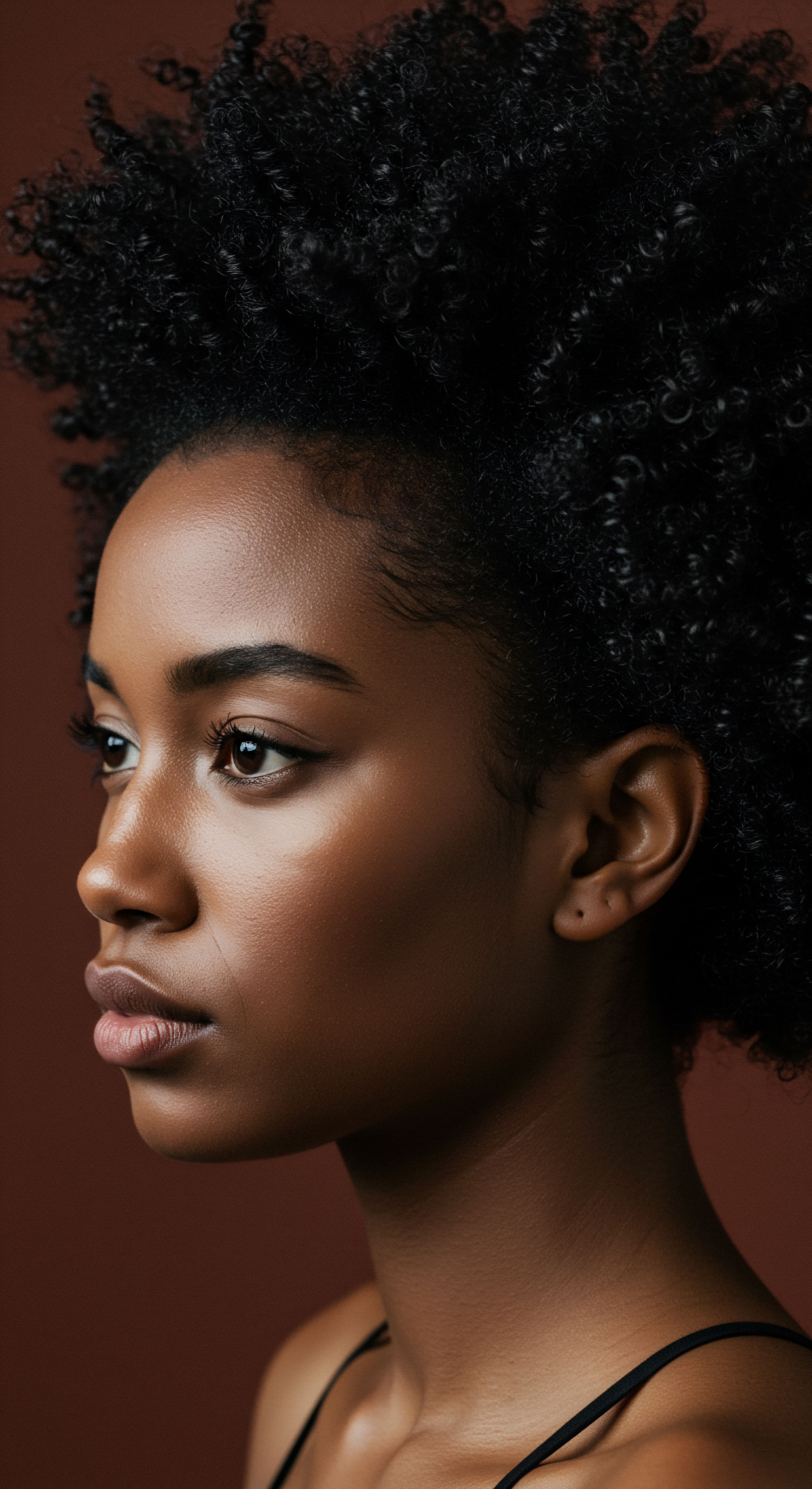
The Biophysical Logic of Traditional Care
The challenge of moisture retention, particularly for highly textured hair, is a persistent one. Afro-textured hair, characterized by its elliptical shape and tight coil, possesses a cuticle that is often more open and less uniform, leading to increased water loss. This biophysical reality necessitated practices that actively mitigated dehydration. Traditional methods did not merely apply moisture; they sought to create an environment where moisture could be sustained.
Consider the historical use of specific plant extracts, such as those containing mucilage. Mucilage, a gel-like substance found in many plants, is a polysaccharide hydrocolloid that forms a slimy solution when mixed with water. This property allows it to create a protective, hydrating film on the hair shaft, reducing transepidermal water loss (TEWL) from the hair and scalp.
Research indicates that plant mucilages, like those from Litsea glutinosa leaves, can reduce water surface tension and even promote cell proliferation, suggesting a direct benefit to scalp health and hair growth. This isn’t merely a topical application; it’s a functional barrier that supports the hair’s inherent ability to hold water.
Traditional hair care practices often demonstrated an intuitive mastery of biophysical principles, creating a protective sheath around hair to preserve its precious water content.

Beyond Surface Deep ❉ Scalp Health and the Microbiome
A truly profound aspect of traditional hair care, often overlooked in modern discussions focused solely on the hair shaft, is the deep attention paid to scalp health. The scalp is the living foundation of hair, and its condition directly influences moisture delivery to the growing strands. Many traditional practices incorporated ingredients and techniques that supported a balanced scalp environment.
The concept of the scalp microbiome, a community of microorganisms residing on the scalp, is a relatively new area of scientific inquiry. However, traditional practices intuitively supported a healthy scalp environment. For instance, the use of fermented ingredients like fermented rice water or kombucha not only benefits the hair shaft but also introduces beneficial compounds that can help balance the scalp’s microbial community.
An imbalanced scalp microbiome can lead to issues like dandruff, irritation, and compromised barrier function, all of which can impede moisture regulation. By restoring microbial balance, these traditional ferments contribute to a healthier scalp, which, in turn, supports better hair hydration.
A compelling example of this systemic approach is found in the ancient African practice of using Chebe, a blend of herbs and animal fat, by women of the Basara tribe in Chad. This mixture is applied to the hair and then braided, traditionally once a week, for length retention. While modern science often emphasizes water absorption, the Chebe practice suggests a different, perhaps counter-intuitive, approach to moisture ❉ sealing. The animal fat and oils in Chebe are occlusive, forming a barrier that prevents water from escaping the hair shaft, particularly for hair types that are prone to rapid moisture loss due to their structure.
This contrasts with a common contemporary emphasis on pure water-based hydration, suggesting that for certain hair types, a robust sealing strategy might be more effective in the long term for preserving the hair’s internal water content. The effectiveness of this method, resulting in remarkable length, hints at a practical, lived understanding of moisture retention that prioritizes preventing evaporation over constant re-wetting.

The Interplay of Culture and Science
Traditional hair care is rarely a standalone beauty routine; it is often intertwined with cultural identity, social rituals, and even medicinal practices. The ethnobotanical studies of various regions, from South West Nigeria to the Kashmir Himalayas, document a vast array of plants used for hair care, often citing their hydrating, strengthening, and protective properties. These applications were not isolated to aesthetics but often served a dual purpose of health and adornment.
The deep cultural significance of hair meant that care practices were often performed with mindfulness and intention, creating a ritualistic aspect that fostered consistency. This consistent application, even of seemingly simple natural ingredients, cumulatively contributed to sustained moisture balance. The choice of plant, the method of preparation (infusion, decoction, paste), and the frequency of application were all tailored to the specific needs of the hair and the environment, reflecting an accumulated body of knowledge that was both scientific in its effect and cultural in its transmission.
| Plant Source Okra (Abelmoschus esculentus) |
| Key Bioactive Compounds Mucilage, vitamins, minerals |
| Mechanism for Moisture Balance Forms a hydrating film, regulates sebum flow, provides vitamins for scalp health. |
| Plant Source Soapnut (Sapindus mukorossi) |
| Key Bioactive Compounds Saponins |
| Mechanism for Moisture Balance Mild cleansing without stripping natural oils, binds water for conditioning effect. |
| Plant Source Fermented Rice Water |
| Key Bioactive Compounds Amino acids, vitamins, minerals, probiotics |
| Mechanism for Moisture Balance Strengthens hair shaft, improves elasticity, balances scalp microbiome, enhances nutrient absorption. |
| Plant Source Bentonite Clay |
| Key Bioactive Compounds Minerals (calcium, magnesium, iron) |
| Mechanism for Moisture Balance Absorbs excess oils and impurities without disturbing moisture balance, humectant properties. |
| Plant Source Shea Butter (Vitellaria paradoxa) |
| Key Bioactive Compounds Fatty acids, vitamins A and E |
| Mechanism for Moisture Balance Forms occlusive barrier to prevent moisture loss, provides emollients for softness. |
| Plant Source Traditional botanical choices reflect a sophisticated understanding of hair hydration. |

Reflection
The quiet wisdom of traditional hair care, often dismissed in the hurried pace of modern life, offers a profound mirror to our contemporary quests for moisture balance. These enduring practices, passed through generations, reveal a deep reverence for natural cycles and an intuitive understanding of hair’s intricate needs. They speak not of quick fixes, but of sustained attention, a rhythmic dance with nature’s offerings. As we navigate an ever-evolving landscape of products and promises, perhaps the most valuable lesson from these ancestral ways is the gentle reminder that true vitality often blossoms from patient consistency and a thoughtful relationship with the world around us, and indeed, with our own strands.

References
- Clinikally. (2024, February 17). Embracing the Wonders of Fermented Oils in Hair Care.
- New Directions Australia. (2019, December 29). Saponins, Nature’s Soap and So Much More!
- Learn Canyon. (2024, September 4). Why Fermented Ingredients Boost Organic Skincare & Haircare.
- Dermaviduals.de. Saponins in skin care – special actives.
- KERA BOND hair science. (2024, December 12). Role of Fermented Ingredients in Scalp Microbiota Balance.
- MYOM haircare. (2021, April 27). When nature meets science ❉ biofermented products.
- Ocean Salon Systems. (2024, July 22). The Benefits of Fermented Hair Care Products.
- EBSCO Research Starters. Afro-textured hair.
- Clinikally. (2023, October 26). Unlocking Saponins ❉ Nature’s Gift for Beautiful Skin.
- Journal of Pharmacy & Pharmacognosy Research. (2021, August 10). Ethnobotanical study of plants used for medicinal, cosmetic, and food purposes in the region of Moulay Yacoub.
- IJRESM. Evaluation and Formulation of Okra Extract (Mucilage) Containing Moisturizing Hair Conditioner.
- ResearchGate. (2022, February 15). View of An Inclusive Review on Mucilage ❉ Extraction Methods, Characterization, and its Utilization for Nanocarriers Manufacturing.
- ResearchGate. (2018, September). Mucilage powder from Litsea glutinosa leaves stimulates the growth of cultured human hair follicles. Songklanakarin Journal of Science and Technology, 40(5), 1076-1080.
- S+ Haircare. Plant extract complexes.
- Mr. Hygiene. (2024, December 4). Is Hair Clay Bad for Hair? Benefits & Tips for Healthy Styling.
- PubMed Central. (2023, January 30). Role and Mechanisms of Phytochemicals in Hair Growth and Health.
- Contemporary African-American Hair Care Practices. (2015, May 2).
- The Power Of Natural Clays ❉ A Professional Formulator’s Guide To Skincare & Haircare. (2025, April 15).
- ResearchGate. (2024, September 25). An Assessment of the Safety, Efficacy, and Tolerability of a Novel Scalp Treatment Regimen Combining a Hydroxy Acid-Based Scrub and Copper Tripeptide Serum in the Management of Seborrheic Dermatitis in Adults.
- MDPI. Skin and Scalp Health Benefits of a Specific Botanical Extract Blend ❉ Results from a Double-Blind Placebo-Controlled Study in Urban Outdoor Workers.
- MDPI. The Genomic Variation in Textured Hair ❉ Implications in Developing a Holistic Hair Care Routine.
- Daimon Barber Journal. (2018, September 4). The Complete Guide to Hair Clay for Men.
- Ethnobotanical studies of folklore phytocosmetics of South West Nigeria.
- ResearchGate. (2024, December 9). Scalp application of antioxidants improves scalp condition and reduces hair shedding in a 24‐week randomized, double‐blind, placebo‐controlled clinical trial.
- Natural alternatives from your garden for hair care ❉ Revisiting the benefits of tropical herbs.
- Hilaris Publisher. (2024, December 17). New Frontiers of Non‐Invasive Detection in Scalp and Hair Diseases ❉ A Review of the Application of Novel Detection Techniques.
- CMS Industries. (2025, February 5). Amazing Benefits of Bentonite Clay on 4C Hair.
- ResearchGate. Plant saponin biosurfactants used as soap, hair cleanser and detergent in India.
- PMC. Cosmetic ethnobotany practiced by tribal women of Kashmir Himalayas.
- Hilaris Publisher. (2024, December 17). Understanding Scalp Health ❉ Key Factors and Treatment Options.
- MDPI. Cosmetopoeia of African Plants in Hair Treatment and Care ❉ Topical Nutrition and the Antidiabetic Connection?
- International Journal of Pharmaceutical Sciences. Hair Structure and Care ❉ A Review of Herbal Hair Care Cosmetics.
- Juniper Publishers. (2024, April 19). Cosmetic Ethnobotany Used by Tribal Women in Epe Communities of Lagos State, Nigeria.
- A Primer to Natural Hair Care Practices in Black Patients.
- Reddit. (2021, August 26). No raw oils and butters vs. Traditional African hair care? ❉ r/Naturalhair.
- PMC. Bentonite Clay as a Natural Remedy ❉ A Brief Review.
- GSC Online Press. (2024, November 23). Phytochemicals in hair care ❉ A review of natural ingredients and their applications.
- Indian Journal of Dermatology, Venereology and Leprology. Hair cosmetics.
- Clinikally. (2024, June 3). Reviving Ancient Hair Rituals ❉ Exploring the Therapeutic Art of Hair-Oiling.
- IJFMR. A Review on Hair Care Cosmetics and Indian Medicinal Plants for Hair.